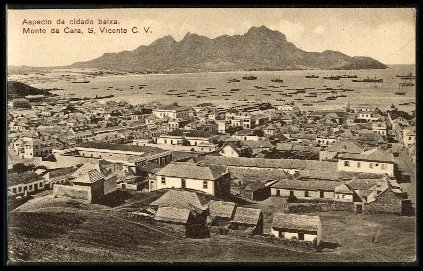
Cape Verdean immigrants followed Portuguese settlers to Massachusetts, leaving a significant mark on the maritime and service industries. Cities like Brockton, New Bedford, and Boston have become vibrant hubs for Cape Verdean culture and community.
Estimated Population: Approximately 200,000
A History of Migration: From the Cape Verde Islands to Massachusetts
Cape Verdeans have been migrating to Massachusetts since the 1840s. However, significant numbers began settling in the Boston area only in the 1970s. Today, Cape Verdeans rank among Boston’s top ten immigrant groups and are the largest African-born community in the city.
The Cape Verde archipelago, located off the coast of Senegal in West Africa, was colonized by the Portuguese in the 15th century. The islands became a center for the slave trade and a critical provisioning stop for ships. By the mid-19th century, drought and poverty forced many Cape Verdeans, including former slaves and mixed-race populations, to seek opportunities on Atlantic whaling ships.
The initial wave of migrants, predominantly men, arrived in New Bedford between 1890 and 1921, driven by seasonal work opportunities on packet ships operated by Cape Verdean companies. Migration slowed significantly in the 1920s due to restrictive U.S. immigration laws and Portuguese controls over emigration.
The 1965 Immigration Act and Cape Verde’s independence in 1975 opened new doors for migration, allowing Cape Verdeans to move more freely. By the 1980s, Cape Verdeans were migrating globally, with New England remaining a preferred destination due to historic ties.

Diverse Origins and Changing Migration Patterns
The second wave of Cape Verdean immigrants differed from earlier arrivals. While the initial migrants primarily came from Brava and Fogo, the newer groups included individuals from São Tiago, São Vicente, and São Nicolau. The gender balance also shifted, with equal representation of men and women, and the socioeconomic background of immigrants became more diverse, including both the educated and the economically disadvantaged.
Settlement Patterns: Building Communities Across Massachusetts
The first Cape Verdean immigrants settled in New Bedford and surrounding areas of southeastern Massachusetts and Rhode Island. Over time, a smaller community emerged in Boston, but the majority of Boston’s Cape Verdean population arrived after 1975.
Cape Verdeans in Boston have primarily settled in Roxbury and Dorchester, particularly between Dudley Square and Upham’s Corner, areas with predominantly Black and Latino populations. Brockton, a city between Boston and New Bedford, has also become a key settlement area, with Cape Verdeans accounting for approximately one-third of its foreign-born population as of 2014.
Contributions to the Workforce and Economic Growth
Following the decline of whaling in the late 19th century, Cape Verdeans transitioned into maritime jobs, including dockwork and positions on merchant ships, as well as seasonal agricultural work such as cranberry harvesting. Some also worked in New Bedford’s textile mills, although often in lower-paying roles.
The second wave of Cape Verdean immigrants initially found employment in factories around Boston and Brockton. As manufacturing jobs declined, many transitioned to the service industry, while others established small businesses, including restaurants, grocery stores, and real estate offices. In recent years, the second generation has entered professional, managerial, and civil service roles, contributing to the community’s upward mobility and continued growth.


